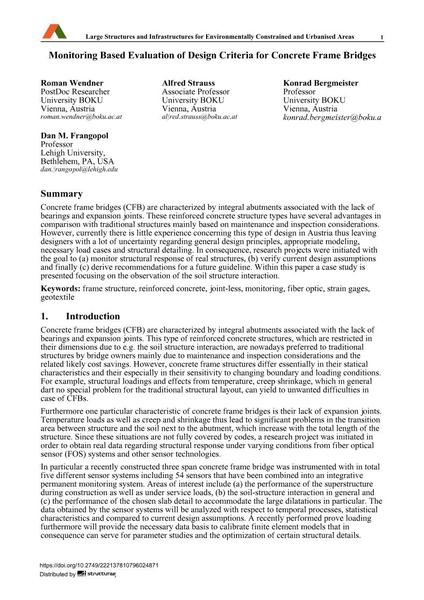Monitoring Based Evaluation of Design Criteria for Concrete Frame Bridges

|
|
|||||||||||
Détails bibliographiques
| Auteur(s): |
Roman Wendner
Alfred Strauss Konrad Bergmeister Dan M. Frangopol |
||||
|---|---|---|---|---|---|
| Médium: | papier de conférence | ||||
| Langue(s): | anglais | ||||
| Conférence: | IABSE Symposium: Large Structures and Infrastructures for Environmentally Constrained and Urbanised Areas, Venice, Italy, 22-24 September 2010 | ||||
| Publié dans: | IABSE Symposium Venice 2010 | ||||
|
|||||
| Page(s): | 332-333 | ||||
| Nombre total de pages (du PDF): | 7 | ||||
| Année: | 2010 | ||||
| DOI: | 10.2749/222137810796024871 | ||||
| Abstrait: |
Concrete frame bridges (CFB) are characterized by integral abutments associated with the lack of bearings and expansion joints. These reinforced concrete structure types have several advantages in comparison with traditional structures mainly based on maintenance and inspection considerations. However, currently there is little experience concerning this type of design in Austria thus leaving designers with a lot of uncertainty regarding general design principles, appropriate modeling, necessary load cases and structural detailing. In consequence, research projects were initiated with the goal to (a) monitor structural response of real structures, (b) verify current design assumptions and finally (c) derive recommendations for a future guideline. Within this paper a case study is presented focusing on the observation of the soil structure interaction. |
||||
| Mots-clé: |
charpente
|
||||

